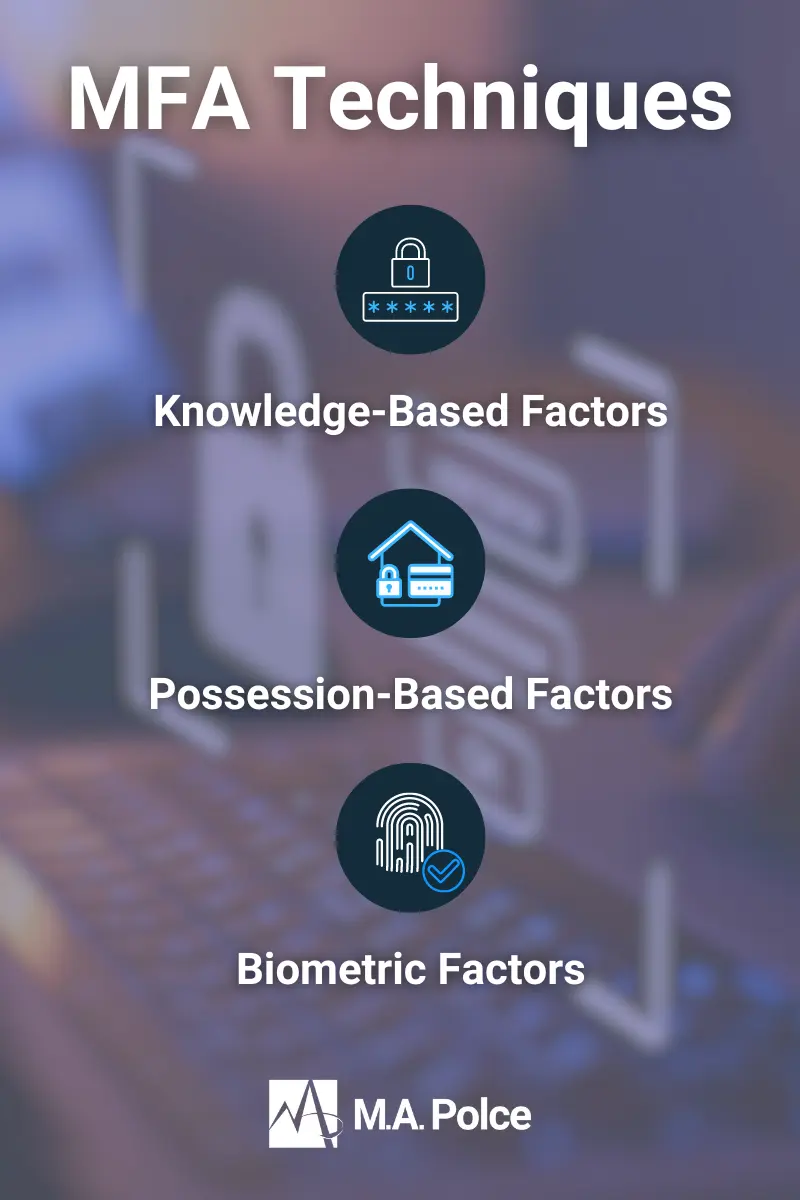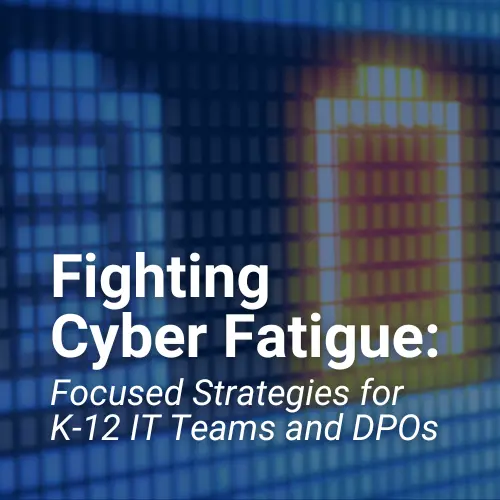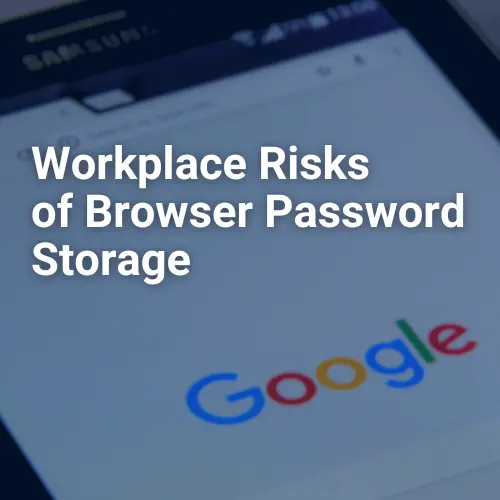An effective cybersecurity plan goes beyond implementing and enforcing strong password policies. While it is advisable for businesses to encourage their employees to create complex passwords and change them periodically, it is essential to note that cybercriminals can still bypass a password or PIN. According to Tech Report, password breaches compromised 5.4 million accounts in Q1 2023.
So, passwords alone are often not enough to protect accounts, applications, and systems from cyberattacks. That’s why more businesses are implementing multifactor authentication (MFA), which delivers an added layer of access control and security. MFA requires users to provide two or more authentications to confirm their identity before receiving access. Learn more about MFA, its advantages, and factors to consider when implementing from M.A. Polce.
What Is Multifactor Authentication?
MFA, also known as two-factor authentication (2FA), has a rich history that dates back to the mid-2000s. As smartphones became more prevalent, 2FA gained traction as a convenient and effective security measure. By the early 2010s, 2FA had become a widespread practice, particularly in the United States, as businesses grappled with a surge in cyber threats.
2FA paved the way for MFA, which goes beyond a simple two-step process for authentication to include multiple means of verifying user identity. MFA techniques can be categorized in three ways:
- Knowledge-based factors: These include the typical passwords or PINs to access accounts.
- Possession-based factors: These are items employers give employees, such as smart cards or hardware tokens.
- Biometric factors: Fingerprints and facial recognition are typical examples of biometric factors.

Advantages of Multifactor Authentication
Multifactor authentication can have a significant impact on an organization’s cybersecurity. For example, a study conducted by Google and researchers from New York University and the University of California, San Diego, analyzed MFA’s ability to block cyberattacks. Their findings, which demonstrate the high success rate of MFA, indicate that the extra step of having a code sent to a smartphone helped block 100% of automated bot attacks, 96% of bulk phishing attempts, and 76% of targeted attacks. This success rate should instill confidence in the effectiveness of MFA.
The MFA market size also indicates a steady increase in use. According to Yahoo Finance, the MFA market size was valued at $19.7 billion in 2023 and is expected to grow at a CAGR of 18.4% to reach $90.3 billion by 2032.
Despite findings like these, MFA adoption appears to be low in some organizations, particularly small and medium-sized businesses (SMBs). One study indicates that 54% of SMBs have no MFA in place, and only 28% require it.
SMBs that neglect MFA miss out on the many benefits it offers for cybersecurity, which include:
- MFA increases security over passwords alone: Cybercriminals can decipher and steal passwords through data breaches, phishing, or similar tactics. MFA helps protect against unauthorized access when passwords are corrupted.
- Lowers the risk of cyberattacks: An added measure for access control decreases the risk of successful data breaches and other threats.
- Ensures compliance with regulatory standards: Compliance is crucial to avoid legal trouble for industries like healthcare and finance. MFA offers the additional layer of security needed to safeguard sensitive information.
- Enhances security with remote and hybrid work models: Increasingly, businesses operate in remote or hybrid environments. MFA strengthens data security even with employees logging in from different locations and using different Wi-Fi networks.
Implementing Multifactor Authentication
To make the most of multifactor authentication, organizations want to ensure their solutions have the right elements. For businesses uncertain about how best to implement MFA and what the solution should encompass, the cybersecurity team at M.A. Polce highlights the key aspects of effective MFA:
Supports Multiple MFA Methods
Choose an MFA solution that offers various authentication management methods, including push notifications, phone call verification, SMS passcodes, hardware tokens, and biometric authentication. Having multiple methods available allows organizations to decide the most appropriate authentication factors for their users and different use cases.
Adaptive Authentication Policies
Flexibility with authentication policies enables customizable access control based on user roles, device trust levels, network attributes, and application sensitivity. Organizations can enforce stronger authentication requirements for high-risk access attempts and minimize friction for low-risk situations.
Endpoint Visibility and Security
Endpoint visibility and device hygiene checkups assess the security posture of endpoint devices that access corporate resources. Features of endpoint security allow administrators to define access policies based on device health status to ensure that only trusted and compliant devices access sensitive data and applications.
Single Sign-On Integration
An MFA solution that integrates with single sign-on allows users to access multiple applications with one set of credentials and simultaneously enforces MFA. This feature simplifies access management for administrators and authentication for users.
Detailed Access Logs and Reporting
Comprehensive access logs and reporting capabilities enable real-time monitoring of authentication events for more effective investigation into security incidents. These functions also help organizations maintain audit trails, demonstrate adherence to regulatory requirements, and create compliance reports.
Integration with Your Security Ecosystem
Your MFA solution should integrate with the various security solutions you use, including identity providers, cloud applications, VPNs, and security information and event management (SIEM) systems. This enforces consistent security policies across the entire IT environment.
Scalability and Reliability
As the business grows, the MFA solution needs to evolve as well. The ideal MFA solution can scale to accommodate organizations of different sizes, from SMBs to large enterprises, without sacrificing availability or reliability. It should support cloud-based deployment for seamless scalability — especially for businesses with dynamic user populations — and minimize infrastructure overhead.
Compliance Requirements
From the GDPR to HIPAA and PCI DSS, there are many regulatory standards and compliance frameworks that organizations across different industries must consider. MFA delivers the level of authentication management necessary to comply with these standards.
In addition to these provisions, businesses want to provide adequate training to ensure teams understand MFA and its implications for their day-to-day. Training facilitates a smooth transition when introducing any new security technology or technique.
Challenges and Limitations
Although multifactor authentication has been proven beneficial for cybersecurity, it’s not without its challenges. As with other cybersecurity solutions, businesses must think about cost and compatibility with existing systems. They must consider employees’ acceptance of the change and willingness to adopt the MFA solution.
It’s also important to acknowledge that MFA isn’t invulnerable. While a much more secure alternative than simply using passwords or PINs, MFA is increasingly becoming the target of specific tactics like MFA fatigue attacks.
Given the difficulties of implementing MFA, organizations want to work with a knowledgeable cybersecurity provider who understands their concerns about access control and authentication management. This provider delivers high-quality and cost-effective solutions, as well as structured support services to navigate challenges with implementation and beyond.
Multifactor Authentication and Other Cybersecurity Services From M.A. Polce
Leveraging multifactor authentication provides organizations with the additional security they need to protect accounts, applications, and systems. For small and medium-sized businesses in New York State that lack the knowledge and resources to create and implement MFA themselves, M.A. Polce offers a solution. As part of our cybersecurity service ecosystem, we provide multifactor authentication to help protect networks and endpoints.
To learn more about adopting MFA into your existing security stack, contact us today at M.A. Polce.
Sources:
https://blog.lastpass.com/posts/2023/10/tracing-the-evolution-of-multi-factor-authentication



